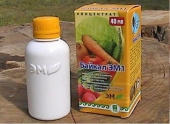posted 7 years ago
Wouldn't you simply inoculate more growing medium, to make more?
Is it not like any other culturation process? You take a living sample of what you wish to propagate, give it food and optimal conditions, and harvest as necessary.
So I would figure out what works best to grow what you already have, perhaps make some shelf-stable for longer-term storage in the event of an accident, and just keep making more.
-CK
A human being should be able to change a diaper, plan an invasion, butcher a hog, conn a ship, design a building, write a sonnet, balance accounts, build a wall, set a bone, comfort the dying, take orders, give orders, cooperate, act alone, solve equations, analyze a new problem, pitch manure, program a computer, cook a tasty meal, fight efficiently, die gallantly. Specialization is for insects.
-Robert A. Heinlein







